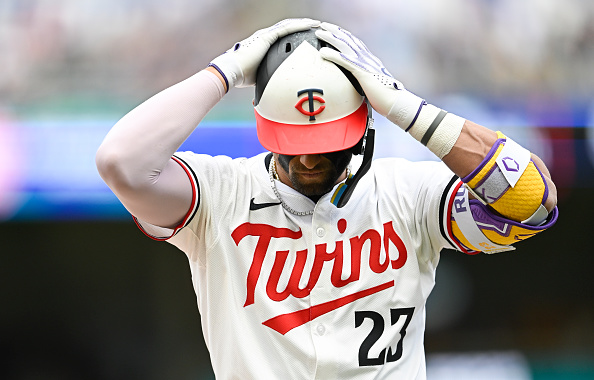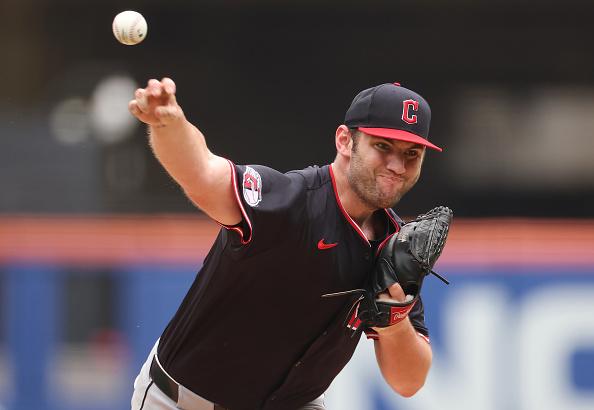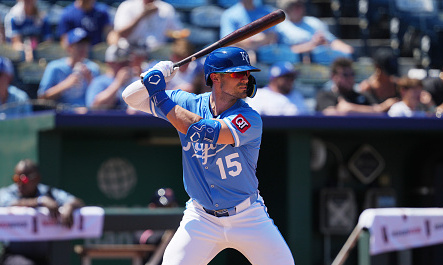There have been many memorable teams in the history of the New York Mets franchise.
Beyond the Miracle Mets of 1969, the World Series-winning squad of 1986, and the unforgettable late-season bloomers in the 2015 Mets, one more club often gets lost in the shuffle.
This team is the 1999 Mets, who had the greatest defensive infield of all-time.
Let’s take a deeper look at who made up that infield at each position.
First Base
One of the most unique ballplayers to ever wear a Mets uniform, John Olerud, was known for wearing a helmet in the field. He also is the Mets’ career record holder in batting average, on-base percentage, and on-base plus slugging.
Although Olerud was a strong contributor on offense, he was an even better defender. He would go on to win three Gold Gloves in his 17-year career, including one in 2000. Although his defensive WAR was seemingly unimpressive, it’s important to keep in mind that as a first baseman, it is near;y impossible to have a significant DWAR, and his 0.2 DWAR in 1999 was as good as any season nine-time Gold Glove winner Don Mattingly ever had.
The year prior, Olerud had a 0.6 DWAR, which blows most first basemen out of the water. In terms of a stat more applicable to his position, Olerud’s .994 fielding percentage in 1999 was better than any other Mets infield starter. A good first baseman is a crucial and often overlooked building block for any defense, and Olerud was exactly that for these Mets. The players around him wouldn’t have been quite as good without him to throw to.
Second Base
Edgardo Alfonzo is one of the few members of this famous infield to never win a Gold Glove, but don’t let that fool you into thinking he was a slouch in the field. Alfonzo committed only five errors in 1999, which is an impressive feat for a middle infielder in and of itself, something 11-time Gold Glove winner Ryne Sandberg only did twice.
What makes this stat extra impressive is that none of Alfonzo’s five errors came on booted ground balls. He is the only starting infielder ever to accomplish this. He manned second base in 158 games for the Mets, and his backups Melvin Mora and Luis López were nearly perfect in those remaining four games.
On the night of Aug. 13 in the bottom of the first inning, López misplayed a grounder. His only muffed ground ball to second the entire season.
Every single ground ball minus one hit to second base was fielded cleanly for a whole year.
While it is disappointing to just barely fall short of perfection, coming that close is still an unfathomable achievement that will likely never be equaled.
Third Base
Playing the hot corner for these Mets was Robin Ventura, who won a Gold Glove during that season, along with five more during the rest of his career. He produced a very impressive 2.8 DWAR, which is better than all Brooks Robinson seasons but three. It is also better than every single Mike Schmidt season and is tied with Nolan Arenado’s best season.
What makes his DWAR even more impressive is that it was a step down from his 1998 season, when he posted a nearly unheard of 3.5.
Shortstop
It wouldn’t be the 1999 Mets without shortstop Rey Ordóñez. Even though Ordóñez is a name many non-Mets fans won’t know, anybody who proudly dons the blue and orange will fondly remember the second-best defensive shortstop who ever lived. His career started off with a bang by throwing a runner out at the plate from the outfield and from his knees during his MLB debut.
After that, he continued to amaze Mets fans, winning Gold Gloves in three of his first four seasons, making countless unforgettable plays along the way. In 1999, Ordóñez had a DWAR of 4.0, which was higher than all of Ozzie Smith’s seasons except one and higher than every season of Derek Jeter’s career combined. During the second half of the 1999 season and the first half of the 2000 season, Ordóñez played 101 consecutive games without an error which at the time was the longest ever such streak for a shortstop and has only been topped once since (Mike Bordick, with a lower DWAR in 2002).
Ordóñez committed only four errors in 1999, which is the second-fewest ever by a shortstop ever, only being outdone by Cal Ripken Jr. There’s so much to say about a talent like Rey Ordóñez but ultimately there is only one way to truly take in his greatness, and it’s to watch him.
Pitcher
Although the Mets’ rotation was nothing spectacular in terms of their pitching ability with no starters having a sub-4.00 ERA, the staff was no exception to this team’s fielding prowess. They had former Gold Glover Orel Hershiser and Kenny Rodgers who would go on to win five Gold Gloves, including one the very next year.
Pat Mahomes Sr., the father of 2018 NFL MVP Pat Mahomes, pitched in 39 games for the Mets that season, committing zero errors.
Catcher
Starting 136 games behind the dish for the Mets was the great Mike Piazza. Hands down the best player on the 1999 Mets and thought to be the easy pick for the weakest defender, that’s not necessarily true. The reason for this misconception is his failure to throw out base-stealers, which used to be the only way catchers were evaluated defensively.
Modern catching stats like Called Strikes Above Average (used to evaluate framing ability) are admittedly spotty in accuracy for backstops of Piazza’s era, but when the numbers were crunched, Piazza’s CSAA sat at plus-137, only six behind Yadier Molina and far ahead of Jason Veritek.
These aren’t the only numbers that prove Piazza’s worth defensively, as his catcher ERA of 3.80 was far better than the 4.34 posted by other catchers who handled the same pitchers, which essentially means he got the best out of his staff. Despite Piazza being one of the only Mets infielders to never win a Gold Glove, modern analytics disprove the notion that he was an offense-only catcher, and he was without a doubt a key contributor to the legendary defense of the 1999 Mets.
The MLB has seen many great defensive infields, with a main challenger to the Mets being the 1975 Baltimore Orioles, who saw Brooks Robinson, Mark Belanger, and Bobby Grich all win Gold Gloves.
To compare these teams, it’s time to bust out “total zone,” which is a stat calculated using Retrosheet’s play-by-play data and is used to compare defensive performance. The higher the number, the better the defender.
The Mets’ starting four infielders aggregated a total zone value of 81, while Baltimore’s starters only accumulated 72.
For those of you who don’t trust fancy stats like total zone, let’s look at errors, of which the Orioles’ starting four committed 57 while the Mets’ infielders committed 27. This mark of 27 errors by starters and a total of 33 by all infielders was the fewest ever at the time.
Baltimore gets credit for having Jim Palmer, an excellent fielding pitcher, but it’s not enough as the Mets’ staff still had more total Gold Gloves and fewer total errors. The Orioles had two catchers play over 80 games. While Dave Duncan and Elrod Hendricks they threw out more runners than Piazza, they also had a lower fielding percentage.
Finally, the 1999 Mets as a whole allowed 20 unearned runs all year. This is the fewest by any team in a full-length season ever. What makes that stat even more impressive is that it is a full team stat. Those 20 unearned runs came from the infield and the outfield.
This was an outfield where not one starter was even close to a positive DWAR, but the infield still managed to carry them to an all-time record.
If that isn’t the greatest of all-time, what is?








One Response